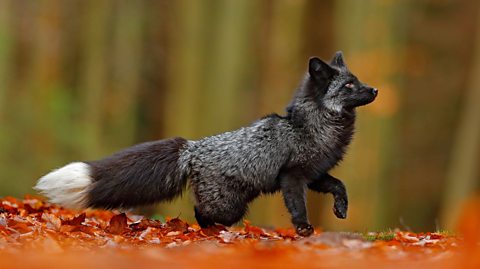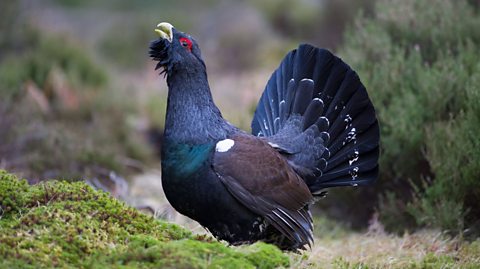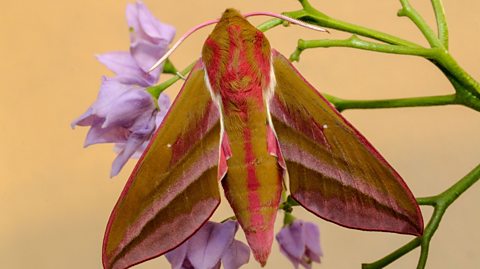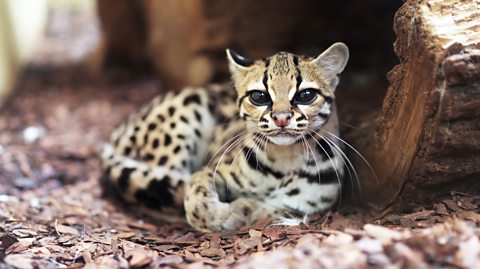The UK is home to an abundance of fascinating wildlife.
Whether youâre strolling through the woodlands, hiking up the mountains or wandering along the coastline, you are sure to encounter animals of all shapes and sizes.
±«Óătv Bitesize takes a closer look at the wild and wonderful UK creatures that have the WOW-factor.

Larger than life: The red deer
Red deer are the largest native land mammals in the UK and are common throughout England, Scotland and Wales. They are one of six species of deer found in Britain and graze on a combination of grass, sedges, rushes, tree shoots and shrubs.
Residing on moorlands, mountainsides and grass near woodlands, you can usually spot them by looking out for large herds of sturdy deer with branching antlers.
The red deer are widely depicted in cave art found throughout European caves, with some of the artwork dating back as early as 40,000 years ago.
In 2009, a giant red stag, named the Exmoor Emperor, was papped by the photographer Richard Austin. The creature was thought to have been the biggest wild land animal in the UK, weighing in at more than 300lb (135kg) and nine feet (2.7m) Dearie me!

The cunning one: The Scottish wildcat
This isn't your average kitty, and certainly not one to pet!
With large eyes, button noses and furry tails, upon first glance the Scottish wildcat would appear to be an overgrown domestic cat. But take a closer look and this tabby is around twice the size of the cats we know and love.
Their thick coats, with very distinctive solid black and brown stripes, help protect them from the harsh Scottish winters. These sensory hairs combined with long whiskers allow them to detect the minute movements of prey such as rabbits, rats and hares.
These felines have evolved from a population of European wildcats, which became isolated by the English Channel over 9,000 years ago.
But deforestation have troubled the species and it is estimated that there are fewer than 400 Scottish wildcats left in the wild. Projects and partnerships, such as Scottish Wildcat Action and Saving Wildcats, have since been set up to promote the conservation and recovery of the wildcats.

Fantastic with a twist: The black fox
Black foxes, also referred to as âsilver foxesâ, are typically a type of European red fox with a quality that makes their fur silvery-black. In recent years, the return of Melanistic animals are animals with an increased amount of the dark pigment melanin in their skin, hair and feathers, giving them a dark appearance. traits in the UK fox population has led to increased sightings of the animal.
According to the campaign group Black Foxes UK, they make up less than 0.1% of the fox population in Britain, which means fewer than one in every 1,000 foxes. As a result, the creature has become a thing of folklore and myth.
In late 2020, a rare black fox sighting near Brean in Somerset brought country lane traffic to a standstill after escaping a wildlife park. The adventurous fox, known as Wilf, escaped from a previous home in Manchester, before being found in the cityâs Trafford Centre.

Oh my grouse!: The capercaillie
Venture into the Scottish native pinewood and if youâre lucky you may come across a huge woodland grouse known as the capercaillie. Once native to Scotland, they become extinct in 1785. All of the remaining population in Scotland are from Swedish stock.
Male capercaillie are particularly unmistakable for having a âbeardâ, which become prominent during courtship displays, as well as their long tails. The Gaelic name for the species, capall-coille, means âhorse of the forestâ.
Splitting their time across the ground and in the tree tops, they spend their days eating the surrounding berries, shoots and stems.
But the UK capercaillie population has declined rapidly. Now classed as a âRed Listâ species, they pose a very real risk of extinction for the second time.

Pretty in pink: The elephant hawk-moth
Known by its scientific name, deilephila elpenor, the nocturnal elephant hawk-moth can be spotted at dusk in gardens, woods, parks, grassy habitats and even sand dunes.
The name is taken from the elephant trunk appearance of the caterpillars, which can be seen from July to September. However, adult moths tend to emerge between May and July.
This hawk-moth species is particularly striking for the bright pink and olive green bars of colour across the wings and body. It has the ability to make itself seem larger and emphasises its eyespots to protect against predators.
According to The Wildlife Trusts you can attract elephant hawk-moths (and any other moths or butterflies!) to your garden or outside space by planting nectar-rich borders for them to feed.
This article was published in August 2022
Six cute animals you've probably never heard of
Ever heard of the pika, the numbat and the margay?

Five insects you didn't know lived in the UK
Meet the cuckoo wasp, a shiny relative of the dung beetle and a fly that is NOT a mosquito.

Three 'immortal' creatures that have fascinated scientists for decades
These animals seem to have cracked the code to stop, or even revert, ageing.
